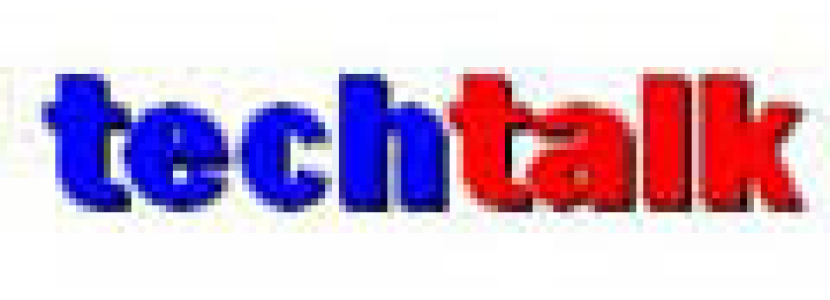
The world economic slowdown and financial woes dominate the news. As businesses and associations contract, meeting planners who still have jobs are being asked to do more than they did in the past with less financial support.
The good news is that meeting technology can help improve efficiency, can act as a labor multiplier, and can reduce overall operating costs. Here are many options for meeting planners to consider:
Online registration:
Compared to the “last-century” way of hand processing registration and payment, online registration systems can increase efficiency by 90% or more. With pricing starting out at about $3/registration, online attendee management companies will automate the data collection, streamline the payment process, and automatically send confirmations while improving customer service (available 24/7) and accuracy (the attendees do the data inputting). Typically, as the data and software is managed and updated remotely in secure data farms, there is little need for local IS support further reducing costs.
Housing:
Managing city-wide room blocks or even the rooming lists for smaller meetings has been a paper-intensive task. Many of the above registration companies and some standalone housing companies offer sophisticated housing modules to handle multiple hotels room blocks, roommate matching, cancellations and more, often times at no additional costs and great time savings to the planner.
Abstract/speaker management:
Associations managing large numbers of speakers and paper (abstract) submissions typically required a team of clerical staff to manage all of the correspondence including paper submission, paper review, presentation scheduling, speaker contracts, speaker bios, speaker photos, session synopses, learner objectives, PowerPoint programs to name a few. Now online speaker management systems manage all these details in a central, online database and many of these programs also streamline speaker management and presentation recording onsite and distribution after the meeting as well. Although these programs cost, the labor reduction and potential revenue from the online sales of the programs often more than cover these costs.
Exhibition management:
There are still many exhibits that are managed using a large, paper floor plan, and loads of White-Out to make corrections and changes. Exhibit companies are penciled in as the space was sold with the data collected on paper. Exhibition management software can eliminate the paper, enable online sales, and reduce labor while providing the opportunity to improve additional revenue and enhanced exhibitor marketing online before, during and after the event.
Hotel sourcing:
Request for proposals (RFPs) that are faxed or emailed to hotels for meeting and sleeping room space are time-consuming and problematic as they are not systematized. For large companies, these hotel space requests come from many people, many of whom are not experienced planners often times exposing their company to huge contractual liability. Often these expenses are difficult to track, especially if they come from numerous administrative assistants in multiple divisions and departments. The old adage applies: If you don’t know how much you are spending on meetings, it is likely that you are spending too much!
Fortunately, there are a number of online sourcing tools that systematize the whole process, automating the communication/negotiation/contract acceptance process with hotels. When these expenses are tracked, the meeting spend per hotel chain can be assessed and leveraged to preferred contract arrangements. They can also provide guide rails for less-experience staff who may be booking meeting space. Savings of 30%-40% are often sited by those implementing a systematized sourcing program.
Project management:
Meetings are essentially projects with many elements with the work usually distributed among several people including meeting planners and suppliers. Tools to manage timelines, shared documents, key deadlines, assign tasks, and track time can make an organization much more efficient. Fortunately, there are several online tools to assist with this. Some are free and some are at a low cost.
ROI (Return on Investment) measurement tools:
Sometimes doing more with less in not about saving money, time or labor. It can be about creating better and more valuable meetings. Fortunately, there are web products available designed to develop metrics to track and measure ROI helping meeting planners and strategic event designers to hold better events.
Meetings marketing:
This is where all the rules are changing. Web 2.0 technologies including blogs, micro-blogs, podcasts, viral videos, social networking sites, social review sites are providing free and/or very low cost ways to market meetings and tradeshows compared to standard broadcast media. It takes some out-of-the-box thinking for many traditional marketers, but can open up new lines of communication with meeting planners who are increasingly adopting these technologies. And the good news, as mentioned, is that they are often only a fraction of the cost of traditional media.
Appointment scheduling:
Conference scheduling for meeting planners assigning meeting space and for attendees trying to match up their schedule and appointments is another paper-intensive task – often times left to individuals to fend for themselves. Automated online tools can save much labor in this effort.
Banquet seating:
Deciding who will sit where during formal banquets can be daunting. There is a program costing under US$30 which will graphically layout the seating plan, grouping people, printing table cards, and much more. It will pay for itself in time-savings in less than one event!
Virtual meetings:
Although face-to-face meetings will remain a very important means of information exchange and networking, virtual meetings and, specifically, web conferencing is exploding in usage as travel funds are being cut. For short information exchange, this is one of the best, and least expensive, options for meeting planners available.
Other labor-saving and service-improving tools:
There are several other technologies that can help planners to do more with less. These include online survey tools, audience polling, contact management, fundraising, catering management, and room diagramming just to name a few.
Business slowdowns are cyclical and the gloomy financial forecast will turn around in time. In the meantime, meeting planners with reduced budgets or increasing time demands should look to some of the meetings technology above to help them do more with less.




